How To Build A New Final Fantasy: An Interview With Creative Business Unit III

Final Fantasy is the oldest gaming franchise. From its humble 1987 Final Fantasy I beginnings to this year’s upcoming tentpole release, Final Fantasy XVI, the series has, in some way, shape, or form, remained prominent for decades. Its success is likely due to how simple it is to jump into any of the new mainline games, i.e. every entry is stand-alone (except for a few direct sequels). Final Fantasy II isn’t a direct sequel to Final Fantasy I, just like Final Fantasy VII isn’t one to Final Fantasy VI.
Terms, mechanics, and sometimes even names might be familiar – there are mainstays like chocobos, magic, Cids, and more – but each new entry features its own cast of characters, world, story, and lore. It’s part of what makes Final Fantasy such a fascinating franchise to cover and be a fan of. It’s constantly changing, and as a result, so is our definition of a Final Fantasy. For me, it’s become a “you know it when you see it” franchise, and that remains true with FFXVI. Despite a new protagonist, a new world, a new combat system, and more, when I see familiar mainstays, I know it’s still Final Fantasy.
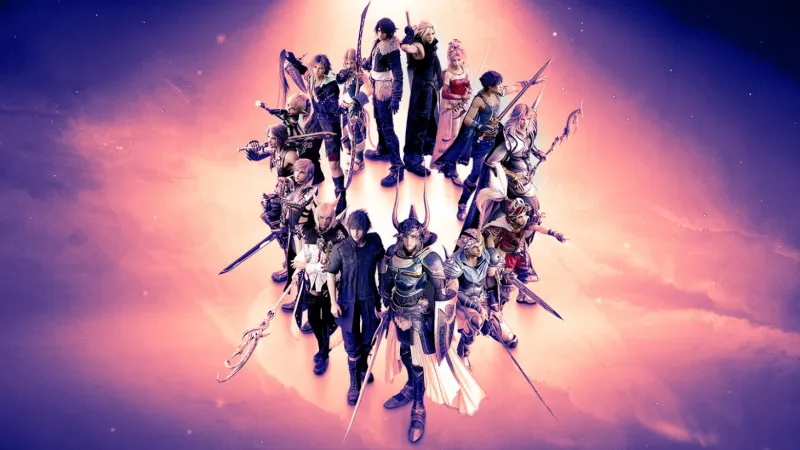
Crystals And Game Of Thrones
To learn more about how games like Final Fantasy XVI are created, I talked to a few of the developers who were behind the game. We discussed what it takes to create a title, the beginnings of the development team, and much more. The world is the first thing that comes to mind.
“Right around the start of the game’s development, back when we’re in that early period, is right about when [Season 4 of Game Of Thrones] was airing,” FFXVI producer Naoki Yoshida tells me within the Tokyo, Japan, office of Square Enix. “We had seen it grow into this television show that was loved around the world, not just by older generations but the younger generation as well. So we bought the Blu-Ray box of Seasons 1, 2, 3, and 4, and made everyone on the team watch it basically to get across to developers that this is what’s trending in the world, this is what people are enjoying, and that this is the type of fantasy that people like.”
Yoshida, however, says that while Game of Thrones is clearly an inspiration, the game itself stands out. Plus, with everything else going on in the game – specifically the Eikon vs. Eikon combat – the team drew on other sources of inspiration like Attack on Titan, Neon Genesis Evangelion, Godzilla, UltramanYou can find out more about us by clicking here.
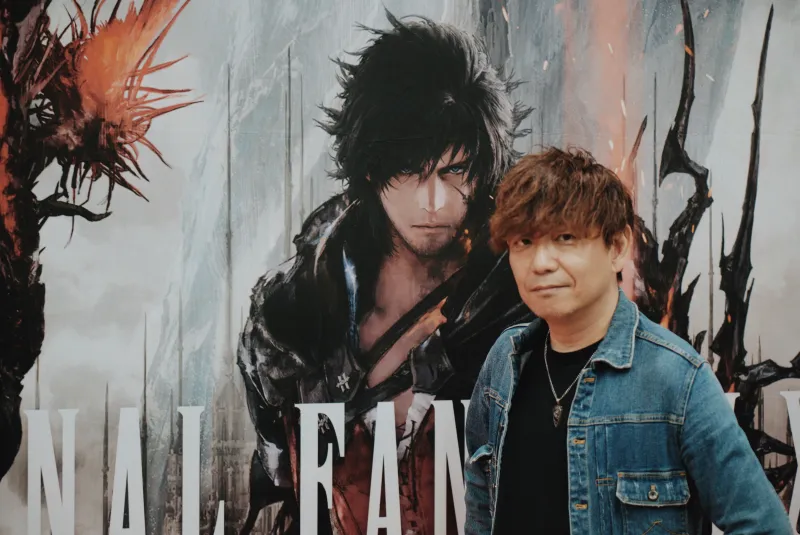
Final Fantasy XVI Director Naoki Yshida
Yoshida, while laying down the inspiration for FFXVI, worked closely with a group of key development leaders to help further define what FFXVI was. This included director Hiroshi Takai, creative director Kazutoyo Maehiro, and art director Hiroshi Minigawa, and each had crucial roles in creating what would become FFXVI’s Valisthea.
“Back when I was first approached by the producer and asked to be the creative director and write the scenario for Final Fantasy XVI, I told him I wanted to take the game to something that took place in those medieval times and have that high fantasy feel,” Maehiro says. “Because, basically for me, Final Fantasy has always been about that high fantasy…exploring those types of worlds and those ancient civilizations.”
Maehiro then began creating the 3D world map that is now a beautiful tilt-shifted version of it in-game. This was done to help him decide the location of mountains, oceans, rivers and other features. Maehiro also thought about how wind might impact certain things, such as which direction it blows. You can also find out more about this by clicking here.You can also find out more about You can also find out more about us here.. Climate is affected by the decisions made, village, city, or town makeups are shaped by the climate and the civilizations living there.
Medieval Origins
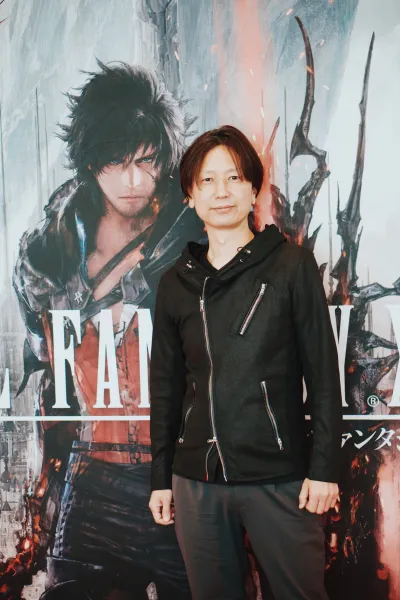
Final Fantasy XVI creative director Kazutoyo Mahehiro
Maehiro then indulges his interest in history, to continue creating Valisthea. Maehiro searches history to find real-life examples of societies and nations that rely on water for their survival. This helps Maehiro understand that Valisthea is not a world of kingdoms, but rather a diverse collection of nations.
“When you look back at a lot of [medieval history], you would have a lot of kingdoms,” he tells me. “While we wanted to have kingdoms as well, when we knew we were going to settle on five named nations in Valisthea, having them all be kingdoms meant everything was going to be the same; you’d always have a king making the decisions and everything trickling down from there.
“And when telling the story, that becomes really one-sided. The story needed to have a deeper meaning for the players as well as for those of us who wrote it. We started out thinking we wanted to do something different for each one, maybe having one be a democracy and another being a kingdom so that we can write from the perspectives of those different governments.”
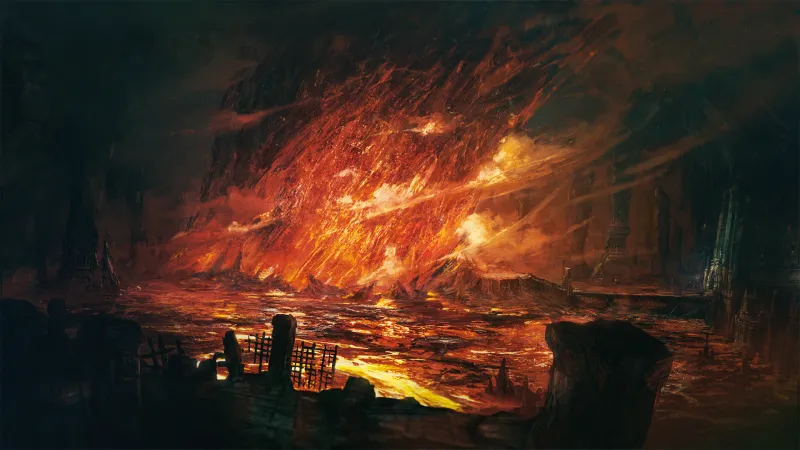
Iron Kingdom of Valisthea
Maehiro, along with his team of writers, can better describe the type of life people live in these places by understanding how the nations are run.
Valisthea’s Visuals
While Maehiro created Valisthea’s map, determining how its intermingled nations might work in the same region, Minigawa worked with Takai and Yoshida on the game’s visual style.
“When I joined the team and spoke with Takai-san about the overall look of the game, we had that broad stroke [that] we wanted to have something that’s going to have that Game of Thrones feel, that kind of pure standard high fantasy that you’d see in that type of program and visual medium,” Minigawa says. “We also had the character artist, Kazuya Takahashi, that designed all the characters, and he had not only designed the characters but had taken the time to draw art for some of the areas as well.”
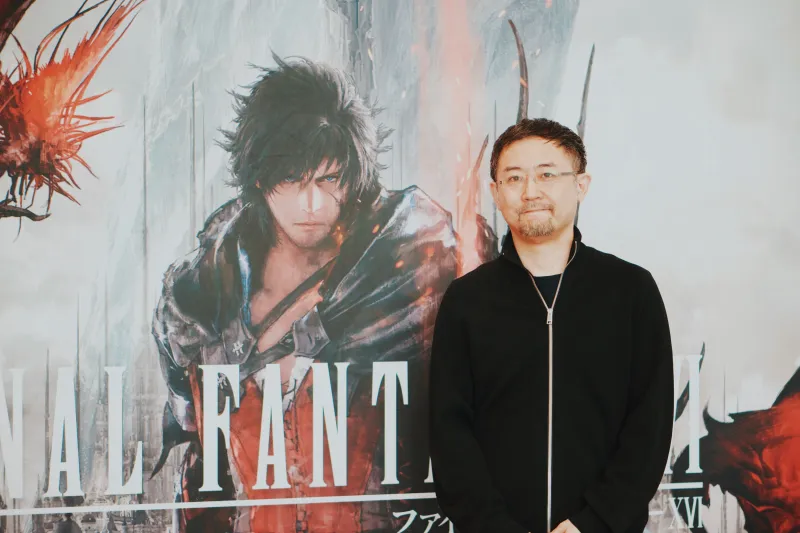
Final Fantasy XVI Art Director Hiroshi Minagawa
Minigawa says Takahashi’s environmental art was bright, transparent, and beautiful, but given the game’s mature tone (and mature rating, too, a first for the mainline series), the team had to rework it to fit the larger narrative. That vibrant art still exists within FFXVI, but it’s easy to see how what was conceived as a gorgeous and thriving landscape might be decimated in-game (that tends to happen when Eikons clash).
In terms of art, Minigawa says the team aimed for something between illustration and reality without being “necessarily photo-realistic.”
“We wanted more emphasis on that original art that we had from Takahashi and figured out a way to base it off this great art and make it real, but not make it photo-real, and find that perfect place in between.”

Minigawa says that northern England’s unique rock formations are what defines dark fantasy to him. He also cites Iceland’s barren rocky landscapes, Slovenia, the Middle East, and Africa, especially in relation to Valisthea’s Dhalmekian Republic, and even other parts of Final Fantasy, like Final Fantasy XII’s Dalmasca.
Bring The Action
Takai, Minigawa and Maehiro worked on the combat issue while Yoshida and Minigawa fiddled with Valisthea’s world.
“The first things that we decided on were one, that we weren’t going to make an open world game, and two, that we weren’t going to go turn-based and that we were going to go full real-time action, and once we had that, the third thing was completing the scenario and knowing what type of story we wanted to tell,” Takai tells me. “Once we had those three decided, we decided to add people and start bringing them onto the team.”
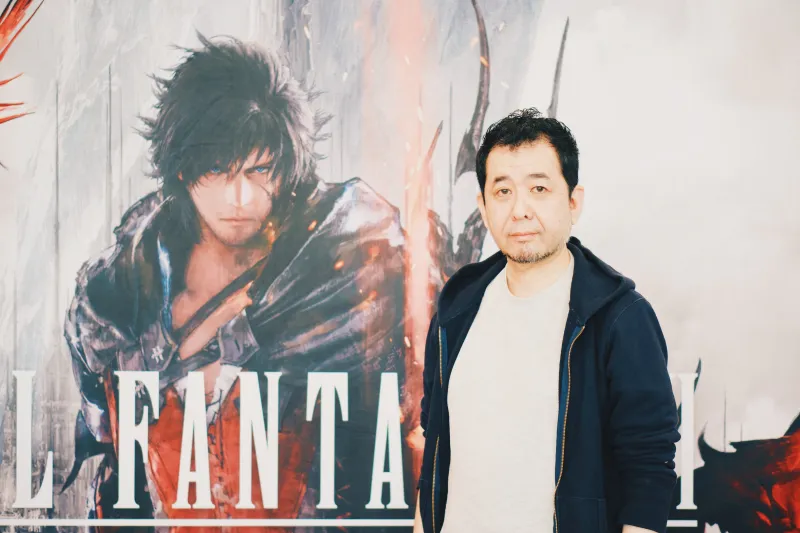
Final Fantasy XVI Director Hiroshi Takai
Both teams began working to develop a real-time fighting experience. Takai & Yoshida realised that the team was in need of someone who could polish the combat. And that’s when Ryota Suzuki, a former combat designer for Devil May Cry 4 and 5 and Marvel vs. Capcom 2, joined the team.
“When I joined the team, they were still very early in creating the combat,” Suzuki says. “It was pretty much at the point where the basic controls had been implemented, so pressing square, you get sword, pressing triangle, you get magic, doing them together, you get combos, and that was pretty much it. When I first joined the group, it was just starting to work.
“At that time, the things you see in the current build you played – things such as Eikonic feats and Eikonic abilities – none of these existed yet. The complex interactions were also non-existent. Basically, you hit an enemy and their HP goes down, and that was about it.”
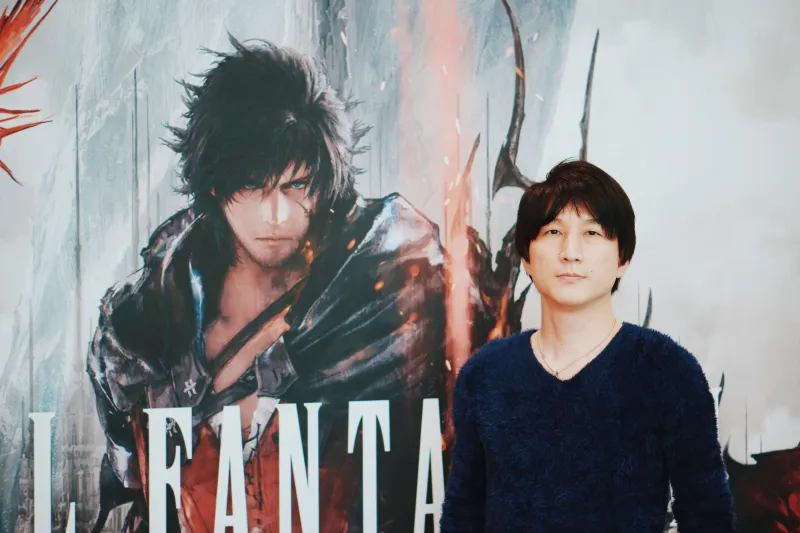
Final Fantasy XVI Combat Director Ryota Suzuki
More obvious things, like FFXVI’s Eikon vs. Eikon combat, guided the team in further developing the action but so did the game’s scenario.
“Because we knew that Clive isn’t just a swordsman – through the story, Clive progresses and meets these different dominants and absorbs their energies, and we knew this from the story, so we wanted to figure out a way to bring this into the battle system,” Suzuki says. “From there, we brought in the feats and the abilities and that foundation of the system that we have.”
Suzuki says that the team aimed for a fun, action-packed game which felt like a perfect fit with Final Fantasy. After playing it multiple times in various previews I can confirm that. It’s quite different and arguably the most fast-paced combat the series has ever seen, but it works and, more importantly, feels great.
The Sound Of Valisthea
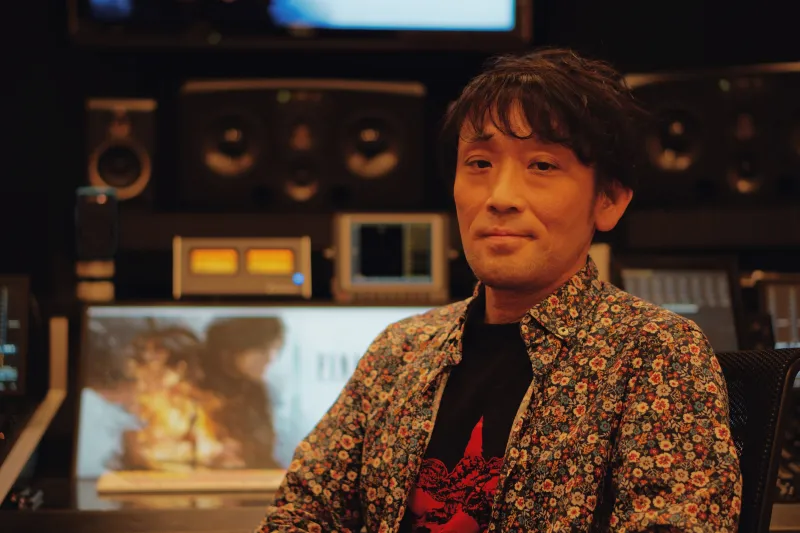
Final Fantasy XVI Music Composer Masayoshi Sken
Score is the final and most important piece in this puzzle. Final Fantasy’s music has always been one of its highlights. There are familiar melodies in typical tracks like the Prelude and Victory Fanfare, but each composer on a game has the chance to add their mark to the series’ history. I spoke with FFXVI composer Masayoshi Soken, who has composed FFXIV’s score with CBUIII, in his recording studio about his first steps into a new game. From the outside looking in, his job within the game’s development sounds more stressful than most.
“Because our work is based on what is created by the development team, we’re working right up to the end,” Soken tells me. “We’re the last ones to usually finish and so were working right up to master and yes, the game has been mastered, but after mastering up and going gold, there’s still a lot of things left for the sound team to do.”
He says post-gold work mainly consists of creating and remixing his FFXVI score for trailers and other forms of publicity leading up to the game’s launch. As for the work before that, Soken says it began with the idea from Yoshida, Maehiro, and Takai that the score should have a “very grand classical feel” and feel “very, very serious and direct.” He also says that compared to other composers, he suspects he does things quite differently when it comes to writing a score: he plays the game first.
Before scoring a scene or scenario, he likes to experience it from the perspective of a gamer. This helps him to determine what type of music will fit it. Soken prefers the process but says that it can be stressful.
“This style of composing, this style of work, can be a two-edged sword,” Soken tells me. “[It] means even though the team will know very early on what type of scene they want to make, it’s still not done yet. They have to make it, which means I can’t start working on a song until they have completed their work, but a lot of times, a lot of their work isn’t completed until right at the end of the development phase, which means all my work comes right at the end.
“I have to make all these hundreds of songs in only a matter of months, and that can be very difficult.”
I spoke with a small group of developers for FFXVI. I’m sure that each member is busy in his or her own way. It was clear from talking to these leaders how many hours go into developing a game. It’s years of work, and it’s clear nothing is more helpful than a solid base to start with. If what I’ve played of FFXVI for this cover story is any indication, that core foundation has led to developing something uniquely familiar for the Final Fantasy franchise. Hopefully, we’re just a few weeks away from finding out if that’s indeed the case.
For more, be sure to check out Game Informer’s exclusive FFXVI coverage hub by clicking the banner below.
#Build #Final #Fantasy #Interview #Creative #Business #Unit #III








